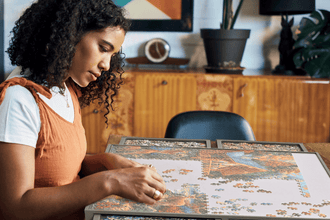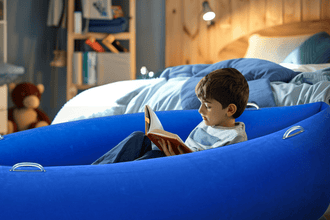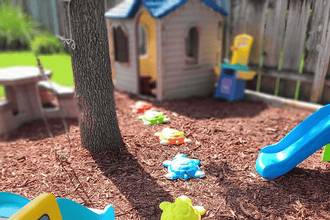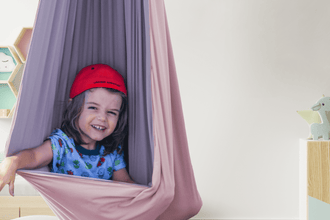
Discover How Stepping Stones Can Boost Motor Skills!
Table of Contents
- Introduction:
- The Importance of Motor Skills Development
- What Are Stepping Stones?
- Benefits of Using Stepping Stones for Toddlers
- How Stepping Stones Support Children with Autism
- Creative Ways to Use Balance Stepping Stones
- Why Parents and Therapists Love Outree Balance Stepping Stones
- Conclusion
Introduction:
Supporting a toddler’s motor skills can be challenging. Stepping stones offer a fun, versatile way to build balance, coordination, and sensory awareness. This article covers what stepping stones are, how they help toddlers develop confidence, and ways they support children with autism. You’ll also find creative play ideas, tips for combining them with other sensory tools, and why parents and therapists love Outree Balance Stepping Stones.
The Importance of Motor Skills Development
What Are Motor Skills?
Motor skills are the abilities that allow children to move and control their bodies. They include both gross motor skills, like running and jumping, and fine motor skills, like grasping and stacking.
Why Focus on Motor Skills?
Early motor skill development lays the foundation for future physical activity and learning. Toddlers who practice balance and coordination tend to explore more safely. Early support can prevent frustration and build confidence. Encouraging movement at a young age promotes healthy habits that last into childhood and beyond.
What Are Stepping Stones?
Definition and Purpose
Stepping stones are small platforms designed for children to step, balance, and jump between. They can vary in height, shape, texture, and color. These toys combine physical activity with sensory exploration. They turn simple play into an opportunity to strengthen balance, coordination, and spatial awareness.
Practical Uses in Therapy and Classroom Settings
Beyond home play, stepping stones are also used in many professional settings. Occupational therapists use them in obstacle paths to work on balance, sequencing, and body awareness. Speech-language pathologists might include them in sessions to pair movement with verbal tasks—like naming colors or counting steps. In classrooms, teachers use stepping stones for movement breaks or rhythm games during music lessons. These activities keep children active, focused, and happy while learning through play.

Benefits of Using Stepping Stones for Motor Toddlers
Developing Balance and Coordination
Stepping stones challenge children to shift weight and stabilize their bodies. Walking, hopping, or stepping between stones improves overall coordination. Toddlers learn to adjust their movements and stay steady. These exercises support both gross and fine motor skills.
Enhancing Core Strength and Stability
Balancing on stones engages abdominal and back muscles. Strong core muscles help maintain posture and prevent falls. Regular use builds endurance and body awareness. Core stability supports all types of active play and daily movements.
Boosting Confidence Through Achievable Challenges
Regular practice with stepping stones allows children to conquer small, physical challenges, which can significantly boost their self-esteem. Play becomes motivating and rewarding, which encourages repeated practice. This confidence grows not just in physical activities but also in social interactions.
Encouraging Sensory Exploration
Different textures, colors, and shapes stimulate touch, sight, and balance senses. Children develop sensory awareness as they explore varied surfaces. This helps with focus, coordination, and emotional regulation. Sensory stepping stones engage children in playful learning.

How Stepping Stones Support Children with Autism
Creating a Safe Space for Movement
Stepping stones provide a predictable and low-risk environment for exploration. Children with autism can move freely without fear of unexpected obstacles. This encourages physical activity and reduces anxiety. Safe movement spaces support overall development.
Supporting Sensory Regulation
The textures and slight instability of stepping stones provide gentle sensory input. This input can calm or stimulate children depending on their needs. It helps regulate emotions, attention, and energy levels. Sensory stepping stones become a tool for structured, calming play.
Building Confidence and Independence
Repeated success on stepping stones teaches problem-solving and self-reliance. Children gain confidence in their physical abilities. Mastering stepping paths encourages independence in both play and daily tasks. Confidence on stepping stones often translates to other activities.

Creative Ways to Use Balance Stepping Stones
Setting Up Indoor or Outdoor Courses
Arrange stones in straight lines, zigzags, or circular patterns. Each layout adds a new challenge for balance and coordination. Courses can fit any room or backyard space. Rotating setups keeps play engaging and unpredictable.
Themed Play Ideas to Make It Fun
Turn stepping stones into part of an adventure. Create a “river crossing,” “mountain trail,” or even the classic “floor is lava” game — kids instantly know the rules and jump right in. Encourage them to pretend they’re explorers, animals, or superheroes on a mission. Adding these playful themes keeps movement exciting and helps toddlers stay active without feeling like they’re exercising.
Combining with Other Sensory Toys
Balance stepping stones pair perfectly with other sensory tools like swings, tunnels, and tactile mats. But one of the best combos is with a balance board. Together, they create a dynamic obstacle course where kids can climb, rock, and step from one challenge to another. This setup encourages full-body movement, balance control, and problem-solving — all while keeping playtime fun and active.

Why Parents and Therapists Love Outree Balance Stepping Stones
- Endless Play Possibilities: Comes with 6 stones in 2 sizes, 3 number spot markers, a spinner, and 24 activity cards — great for building obstacle courses or inventing new movement games.
- Full Rubber Base for Extra Grip: The stones stay firmly in place on any surface, so kids can move freely and safely during active play.
- Turtle-Shell Texture on Top: The raised surface adds tactile feedback, giving kids gentle sensory input that helps them focus and explore through touch.

Conclusion
Stepping stones are more than just toys — they support motor skills, sensory exploration, confidence, and independence. From indoor obstacle courses to imaginative play themes, toddlers can gain strength, coordination, and focus while having fun. They are also a valuable tool for children with autism, helping regulate movement and sensory needs.
If you want a safe, versatile, and engaging way to encourage your child’s growth, check out Outree Balance Stepping Stones and discover how they can make playtime both fun and developmental >>







